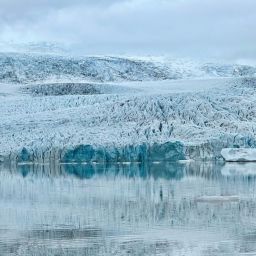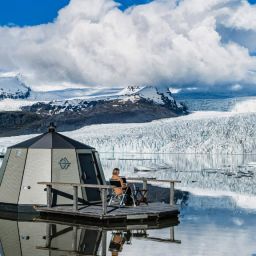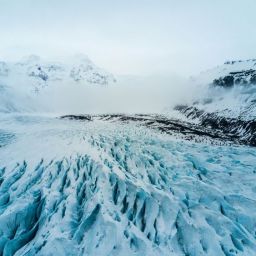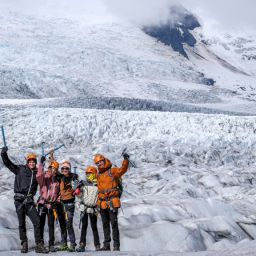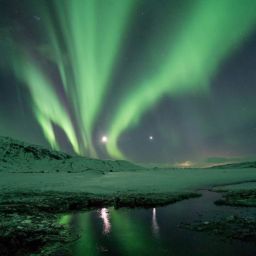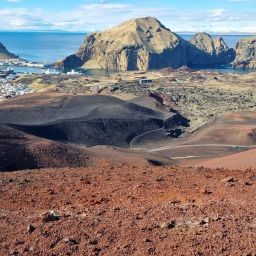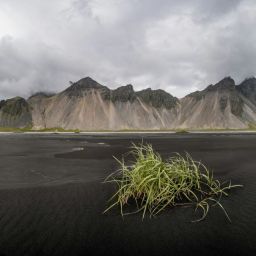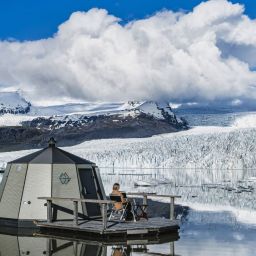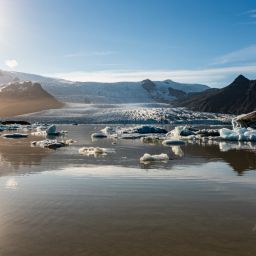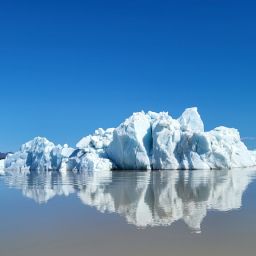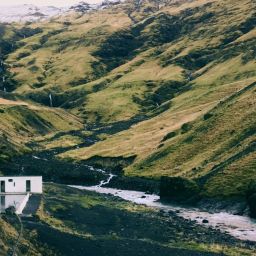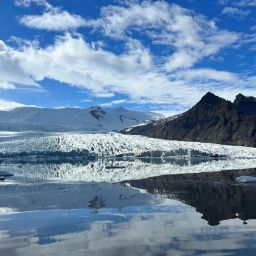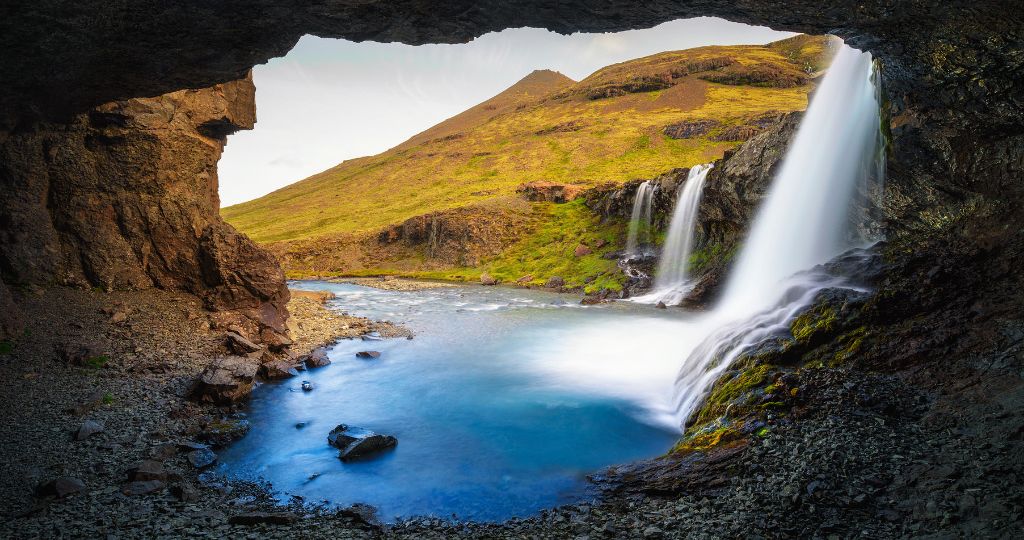
Who doesn’t dream of finding a tucked-away spot in Iceland that is relatively undiscovered? You can be forgiven for thinking that, especially along the country’s busy south coast, it’s almost impossible to find such a place. Yet with a bit of effort, an intrepid attitude and a sense of adventure, hidden gems do still exist. In this article, we’ve rounded up a few of our favourites close to Fjallsárlón, which you can schedule before or after your visit.
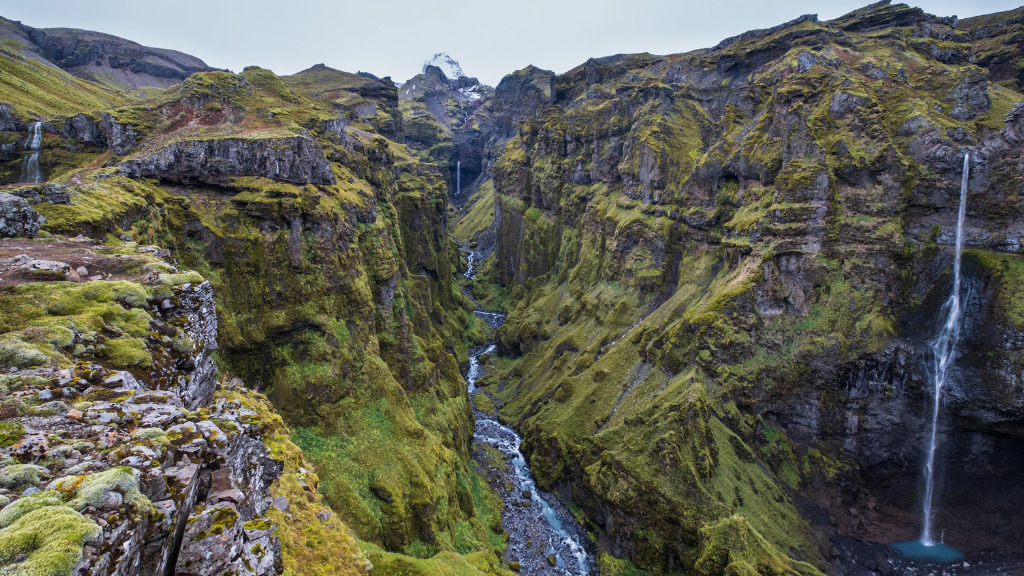
Múlagljúfur Canyon
You don’t have to travel for very long in South Iceland to realise that the region’s not short of magical gorges and canyons. While many are firmly on the beaten track, relatively few tourists set eyes on Múlagljúfur Canyon. A silvery grey river has carved out a narrow canyon, steadily eating away at the rock to create the vertiginous moss-covered cliffs that rise from the valley floor.
It’s hard to believe that the traffic of the ring road and Fjallsárlón itself are just a few miles from here. The lack of signage means that you would miss the turnoff if you didn’t already know it was here and it feels far more remote than it actually is. Use your SatNav to make sure you don’t drive right past; the nondescript gravel splay offers up few clues though you’ll see a cluster of parked cars that might give the game away.
As with many of Iceland’s hidden gems, you’ll need to be prepared to put in a little legwork to reach a spot that isn’t brimming with other visitors. The trail is steep in places and a little uneven, so this canyon isn’t for everyone. But the reward: so worth it. From the viewpoint, Hangandifoss cascades over the rock right in front of you.
Meanwhile Múlafoss is visible in the background to your left. The steady flow of water that drops as Múlafoss (Mule Falls) originates at Öræfajökull. This glacial meltwater forms the Rótarfjallsá River and a few tributaries. The spectacular drop – 101 metres across multiple sections, the tallest of which is an impressive 53 metres – certainly has the wow factor in spades.
Whether you opt to perch here and take in your extraordinary surroundings or continue upwards is totally your call. The trail isn’t as clearly marked, but the chance to look down upon Fjallsárlón is irresistible, particularly on a fine day. Indeed, weather’s a big factor here; muddy conditions in autumn and ice in winter make this a summer destination.
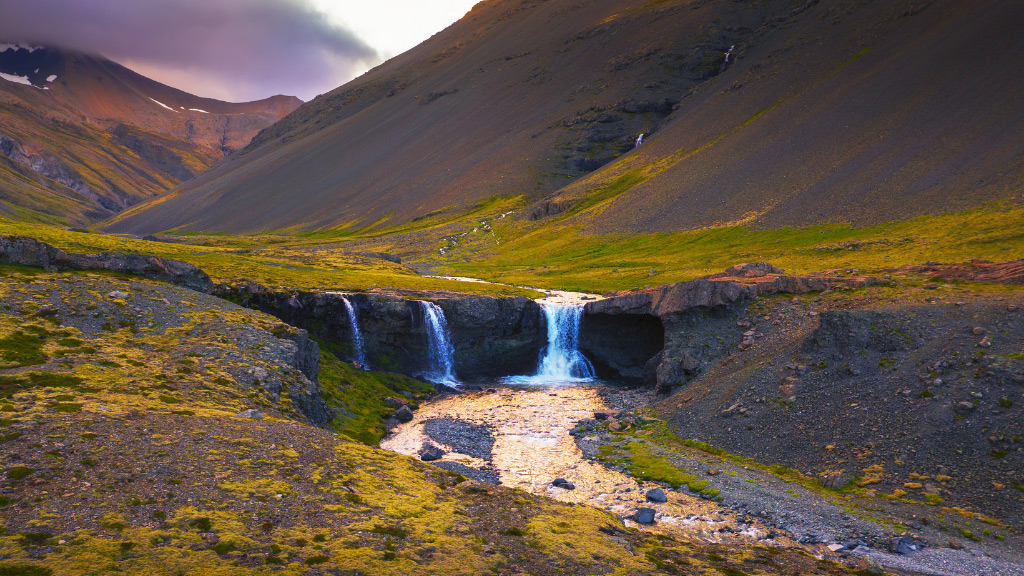
Skútafoss
You get your first clue about the status of Skútafoss as a hidden gem if you search for it online – it will often autocorrect to the much more popular Skógafoss. Yet word about this delightful waterfall is beginning to get out and it’s starting to receive more visitors. It’ll take you longer to reach from Fjallsárlón than Múlagljúfur Canyon – over an hour – but as the journey is east along the ring road it’s not hard to incorporate it as a stop on your itinerary.
So, what’s the appeal? This is by no means one of the tallest waterfalls in Iceland, and neither does it have huge volumes of water tumbling over the rock. Instead, because of the way the rocks crowd around it, it feels like it pours into the ground. Short trails access both the top and the bottom of the falls; be sure to allow time to walk both.
Pick your way to the water’s edge at the base of the waterfall and it’s the dreamiest spot. The water puddles, creating a dazzling plunge pool with a vivid blue colour; it’s clear enough that the pebbles pop. Step inside the cave and not only do you get a close up look at the curtain of water but the eroded rock frames the view perfectly.
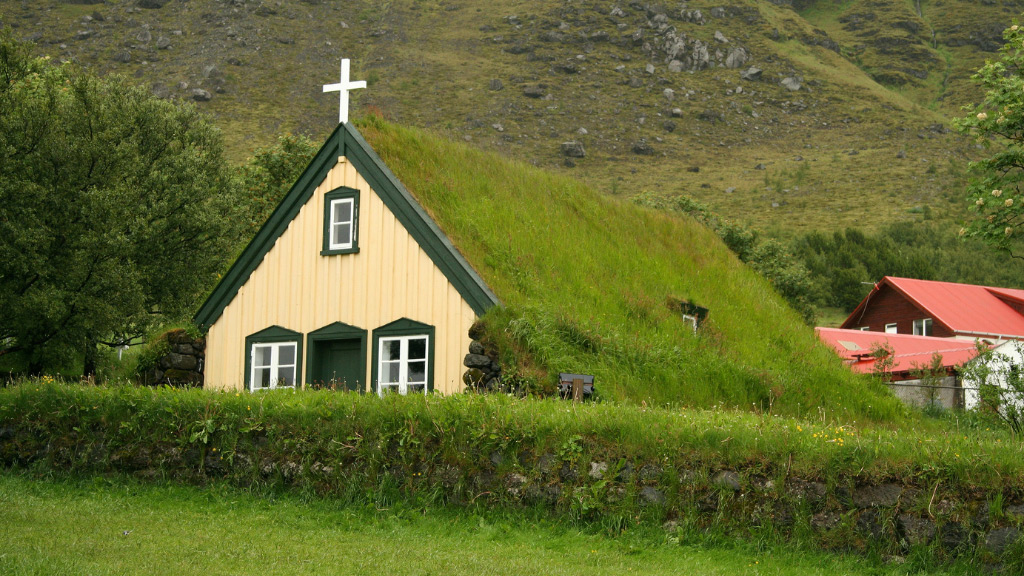
Hofskirkja
Hofskirkja is located less than half an hour’s drive from Fjallsárlón. While you’d hardly describe the setting as wilderness, the position of this church away from the main road means that many tourists speed past it in their hurry to reach the glacial lagoons. It’s worth the pitstop; there are just six turf-roofed churches left in Iceland and this is the newest of them.
The church was constructed as a timber frame on a stone foundation, over which turf was placed to clad the top. It appears to be buried in the earth, but this technique was deliberate, an attempt to shield the building from the worst of Iceland’s weather during the long and often harsh winters.
A church has stood on this site for almost 700 years but the structure you see here today dates from the 1880s. For a time, it fell into disrepair but with the assistance of the National Museum of Iceland, Hofskirkja has now been restored to its former glory. It’s still in use today; you can access the outside no matter when you visit to admire just how photogenic it is.

Þórbergssetur
This overlooked museum and cultural centre a twenty minute drive from Fjallsárlón focuses on the life of famous Icelandic writer Þórbergur Þórðarson. He lived for a time near Jökulsárlón. This author, who died in 1974, was known for his often irreverent musings. Humorous and self-deprecating, he brings to life his comic mishaps through skilful storytelling.
Here, you can learn more about his talent – an opportunity to immerse yourself in Iceland’s cultural heritage in between admiring the area’s jaw-dropping landscapes. It’s easy to spot, as one of its walls is designed to resemble a shelf full of books. The restaurant is another reason to call in, serving locally-caught Arctic char, traditional lamb soup and homemade cakes.
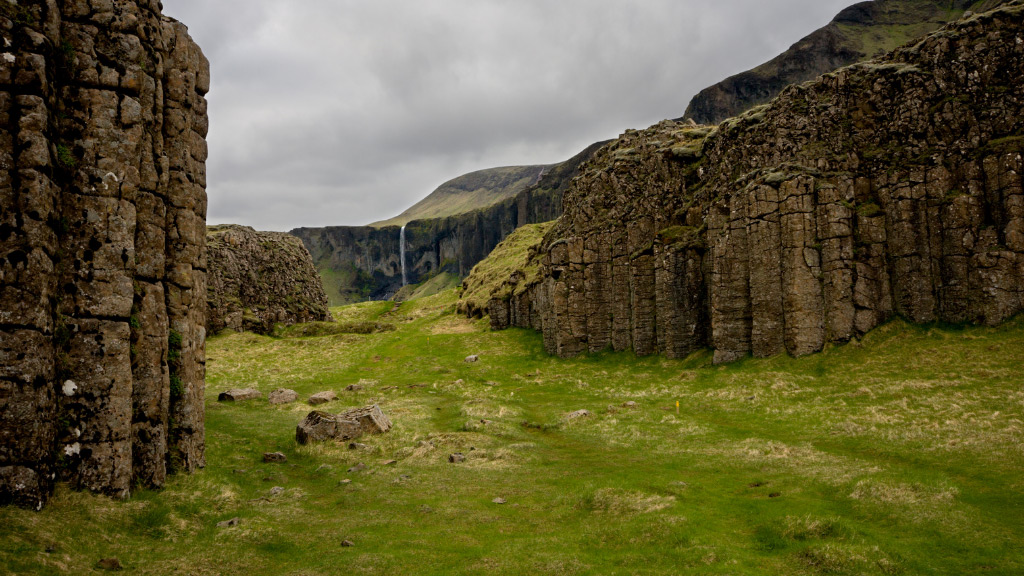
Dverghamrar and Skaftáreldahraun
Alongside its glaciers, volcanic activity has shaped much of the Icelandic landscape. At these two sites, a manageable drive west of Fjallsárlón, geology takes centre stage. You’ll come to Dverghamrar first, and its impressive row of basalt columns encloses a delightful horseshoe-shaped canyon. The place is sometimes referred to as the Dwarf Cliffs, a nod to the belief that huldufólk live in this area.
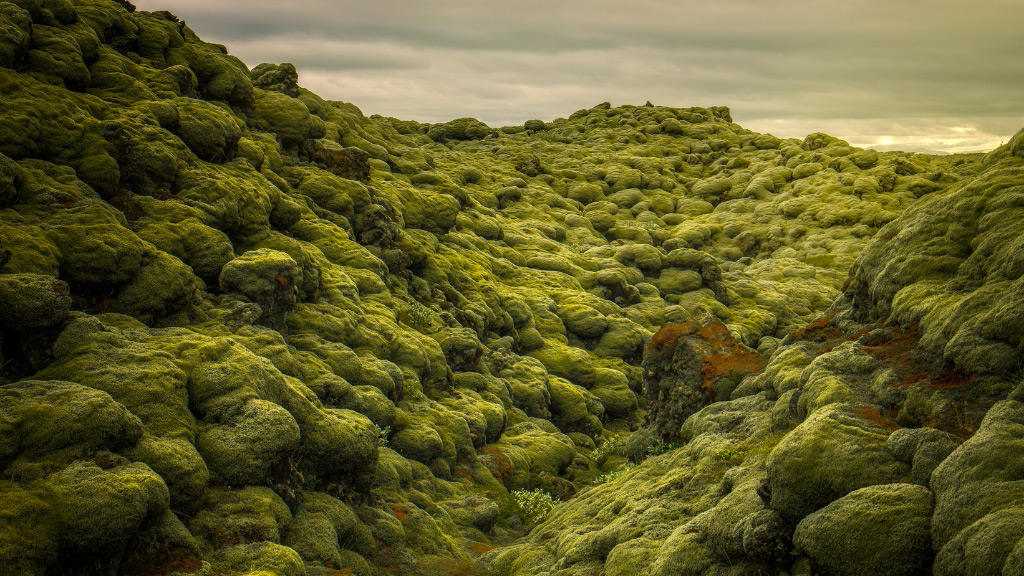
The Skaftáreldahraun lava field dates back to the Skaftá Fires. Back in 1783, an eruption sent lava streaming from Lakagigar in immense quantities; in fact, it’s thought to be one of the largest such flows ever to have occurred anywhere in the world. The lava kept coming, and soon filled the valleys of the Skaftá and Hverfisfljót Rivers.
In all, it took eight months for activity to subside. As the lava pushed its way towards the coastal lowlands, it left a trail of devastation in its wake, destroying farmland and uprooting lives. Today moss has colonised the pāhoehoe lava adding an extra dimension to the lava field’s appeal to travellers. As you gaze out over the vast area, imagine what it was like before the eruption.

Of course, let’s not forget Fjallsárlón itself is often categorised as a hidden gem. Our beautiful lake, on which icebergs bob against the backdrop of the glacier and mountains beyond, is intimate in comparison to our larger neighbour Jökulsárlón. So, if you don’t have time after all to visit some of these hidden gems, be sure to at least build in a visit to our breathtaking glacial lagoon as you travel through this part of South Iceland.


